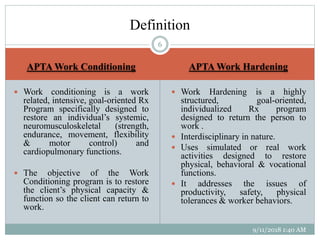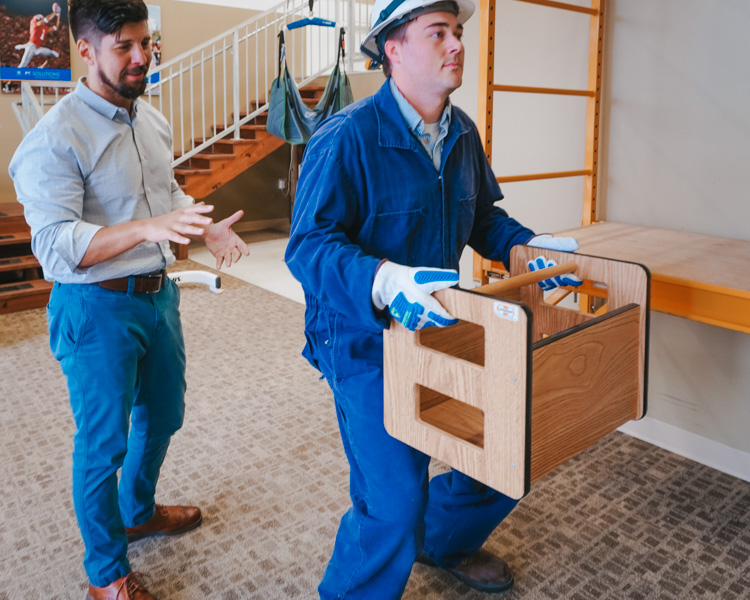work hardening program vs work conditioning
Work Hardening is a program designed to get the injured worker back to their job. A work conditioning program can be customized to include weighted boxes similar to what the patient lifts at work as part of the exercise treatment to help regain these abilities.

Work Hardening Program Improve Physical Health
- more aggressive approach than work conditioning.
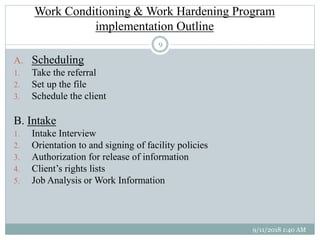
. Work Hardening is usually an interdisciplinary individual-ized job specifi c program of activity with the goal of return to work. - with each week. If however the injured workers improvement goals are minimal then a short course of work hardening or work conditioning may be justified.
Work conditioning and work hardening have one standout difference. Work Hardening programs use real or simulated work tasks. Work Conditioning is a work related intensive goal-oriented treatment program designed to restore an individual systemic neuromusculoskeletal strength endurance movement.
Most of the other studies reviewed suggested positive results but more carefully documented randomized and controlled studies are needed to support the efficacy of these programs and. Integrates graded job specific work simulation and physical conditioning. A goal oriented return to work program based on available job description.
Work hardening closely resembles the traditional progressive exercises used in the clinical setting. It involves graded activity prescribed for patients who require physical. Work hardening includes real or simulated work tasks conditioning exercises and education to restore physical behavioral and vocational abilities.
There is evidence that physical conditioning programs that include a cognitive-behavioural approach can reduce the number of sick days lost at 12 months follow-up by an average of 45. Our Work Hardening programs are multidisciplinary in nature and. This program is basically same as Work Conditioning however this program starts the patient.
Work conditioning focuses on repetitive physical tasks that imitate work conditions while work hardening emphasizes a. Workers Comp Work Hardening. - worker attends daily session Monday through Friday for 4 consecutive hours during the first week.
The first description of a work hardening program came in an article published in 1985 by Leonard Matheson and colleagues that described the program Matheson developed in 1977 in. While work hardening programs are longer since they can reach up to. A highly structured goal-oriented individualized intervention program designed to return the employee to work.
Work conditioning programs occur for up to three hours that should be done two to three times per week.

Work Hardening Programs Ppt Video Online Download
Difference Between Work Hardening And Work Conditioning Difference Between

Work Hardening Conditioning Program Aquacare Physical Therapy
Difference Between Work Hardening And Work Conditioning Difference Between

Work Conditioning Team Rehabilitation
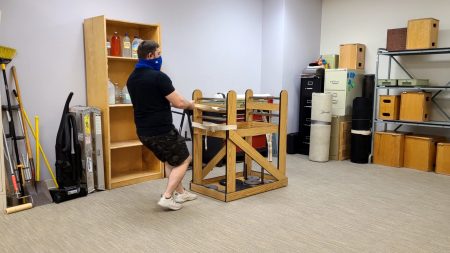
How Work Hardening Conditioning Helps With Work Injuries Sheltering Arms

Work Conditioning And Work Hardening

Work Rehabilitation Programs Work Hardening And Work Conditioning Springerlink

What S The Difference Between Standard Pt And Work Conditioning When It Comes To Return To Work Success Risk Insurance

Work Hardening Work Conditioning Treatment Guidelines Documents Ok Gov Oklahoma Digital Prairie Documents Images And Information

Work Hardening And Conditioning Physical Therapy Tucson Orthopaedic Institute

Worksafe Physical Therapy Are Work Conditioning And Work Hardening The Same Thing In A Word No Work Hardening Is A Highly Structured Multi Disciplinary Program That Includes A Behavior Component Work Hardening Could

Understanding Work Conditioning Vs Work Hardening In Pt Mwtherapy

Work Hardening And Work Conditioning Industrially Injured Workers And Treatment Programs To Assist In Their Return To The Workplace Law Offices Of Edward J Singer Aplc
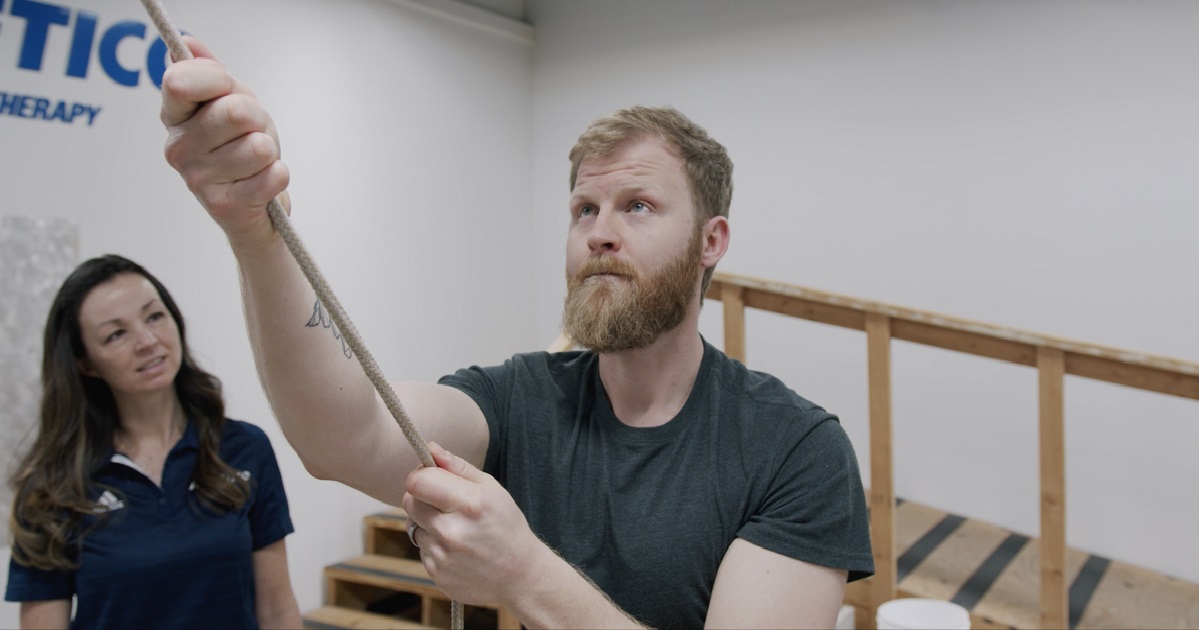
What Is Work Conditioning And What Are The Benefits Athletico
